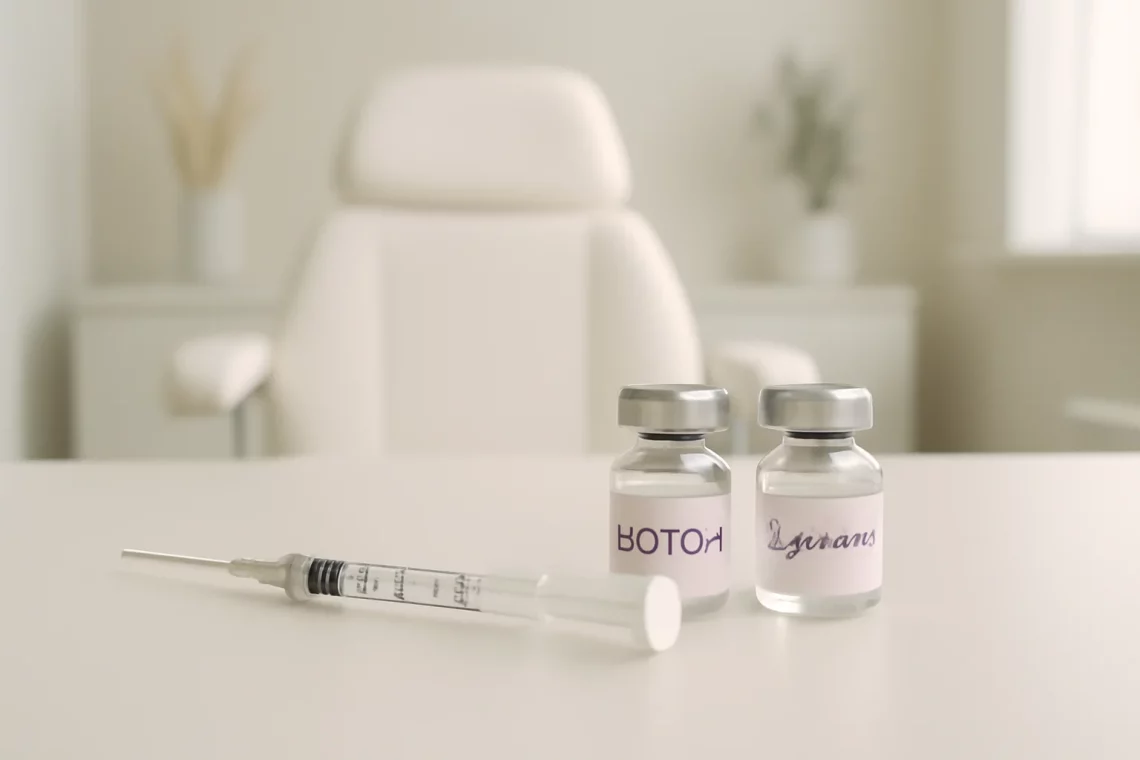
Botox vs Juvederm: Which Anti-Aging Treatment Is Right for You?
Botox and Juvederm are two of the most popular non-surgical cosmetic treatments available today. Both options have gained significant attention for their ability to help individuals achieve a more youthful appearance. While they are often mentioned in the same breath, Botox and Juvederm serve different purposes and utilize different methods to enhance appearance. Understanding the distinctions between these two treatments can help individuals make informed decisions based on their unique aesthetic goals.
As the demand for anti-aging solutions continues to rise, many people are seeking quick and effective ways to rejuvenate their skin without the need for invasive procedures. The allure of looking younger and feeling more confident has prompted a surge in interest around injectables like Botox and Juvederm. Both treatments boast minimal downtime and quick results, making them appealing choices for those looking to enhance their appearance.
The key to choosing between Botox and Juvederm lies in understanding how they work, their specific applications, and potential side effects. Each treatment has its unique benefits and ideal use cases, which can vary based on individual skin types, concerns, and desired outcomes. This article will delve into the intricacies of Botox and Juvederm, helping you navigate the world of cosmetic injectables.
Understanding Botox: Mechanism and Uses
Botox, short for botulinum toxin, is a neurotoxic protein derived from the bacterium Clostridium botulinum. When injected into specific muscles, it temporarily blocks nerve signals, preventing muscle contractions. This unique mechanism is what makes Botox particularly effective for treating dynamic wrinkles, such as crow’s feet, frown lines, and forehead lines.
One of the primary uses of Botox is in the realm of cosmetic treatments. By relaxing the muscles responsible for causing wrinkles, Botox can smooth out fine lines, resulting in a more youthful and refreshed appearance. The effects typically last for three to six months, after which repeat treatments are necessary to maintain the desired results.
Apart from cosmetic applications, Botox is also used for various medical conditions. For instance, it can help alleviate chronic migraines, excessive sweating (hyperhidrosis), and even certain eye disorders, such as strabismus. This versatility makes Botox a popular choice not just for aesthetic enhancement but also for improving quality of life in patients with specific medical conditions.
It’s important to note that while Botox is generally considered safe when administered by a qualified professional, potential side effects can include bruising, swelling, and, in rare cases, eyelid drooping or asymmetry. It is crucial to consult with a certified practitioner to ensure the proper technique and dosage are used for optimal results.
Exploring Juvederm: Composition and Benefits
Juvederm is a brand of dermal fillers made primarily of hyaluronic acid, a substance naturally found in the body. Hyaluronic acid plays a vital role in maintaining skin hydration and volume, making it an ideal ingredient for facial fillers. Juvederm products are designed to restore lost volume, smooth out wrinkles, and enhance facial contours, providing a more youthful appearance.
There are various types of Juvederm products tailored for different areas of the face and specific concerns. For instance, Juvederm Ultra is often used for lip augmentation, while Juvederm Voluma is specifically formulated to add volume to the cheeks and mid-face. The versatility of Juvederm allows practitioners to customize treatments based on individual needs, ensuring that patients achieve their desired outcomes.
One of the significant advantages of Juvederm is the immediate results it provides. Patients can typically see enhanced volume and smoother skin right after the treatment. The effects of Juvederm can last anywhere from six months to two years, depending on the specific product used and the area treated.
As with any cosmetic procedure, there are some potential side effects associated with Juvederm, including temporary swelling, redness, and bruising at the injection site. These effects usually subside within a few days. It’s essential to choose a qualified injector who understands the facial anatomy to minimize risks and achieve natural-looking results.
Comparing Treatment Duration and Recovery
When considering Botox and Juvederm, it’s essential to evaluate not only the results but also the treatment duration and recovery time associated with each option. Both treatments offer relatively quick procedures, typically lasting around 15 to 30 minutes, depending on the areas being treated.
Botox injections generally require minimal downtime. Patients can return to their daily activities immediately after the procedure, although it’s advisable to avoid strenuous exercise and excessive sun exposure for the first 24 hours. Some individuals may experience mild swelling or bruising at the injection site, but these side effects usually resolve quickly.
In contrast, Juvederm may involve slightly more noticeable swelling immediately after treatment, particularly in areas like the lips. However, this swelling typically subsides within a few days, and patients can often resume their normal activities right away. The longevity of results is another factor to consider; while Botox effects last for three to six months, Juvederm results can be maintained for several months to years, depending on the specific product.
Ultimately, the choice between Botox and Juvederm may come down to personal preference, specific treatment goals, and the areas of the face that require attention. Consulting with a knowledgeable practitioner can help individuals determine which treatment, or combination of treatments, is best suited for their needs.
Making the Right Choice: Consultation and Considerations
Deciding between Botox and Juvederm is a personal journey that requires careful thought and consideration. Both treatments have their unique advantages and can be used in tandem for optimal results. To make an informed choice, a thorough consultation with a qualified medical professional is essential.
During the consultation, the practitioner will assess your skin type, discuss your aesthetic goals, and evaluate any underlying medical conditions that may affect treatment. Open communication is vital; patients should feel comfortable expressing their concerns and asking questions about the procedures.
It’s also crucial to choose a reputable practitioner who specializes in cosmetic injectables. Researching qualifications, reading reviews, and viewing before-and-after photos can provide valuable insights into the practitioner’s expertise. Safety should always be a priority, and patients should be informed about potential risks and side effects associated with each treatment.
Ultimately, both Botox and Juvederm can significantly enhance one’s appearance and boost confidence. The choice between the two, or the decision to use both, should be based on individual needs, preferences, and professional advice.
**Disclaimer: This article is not intended as medical advice. For any health-related concerns or treatment decisions, please consult with a qualified healthcare provider.**




